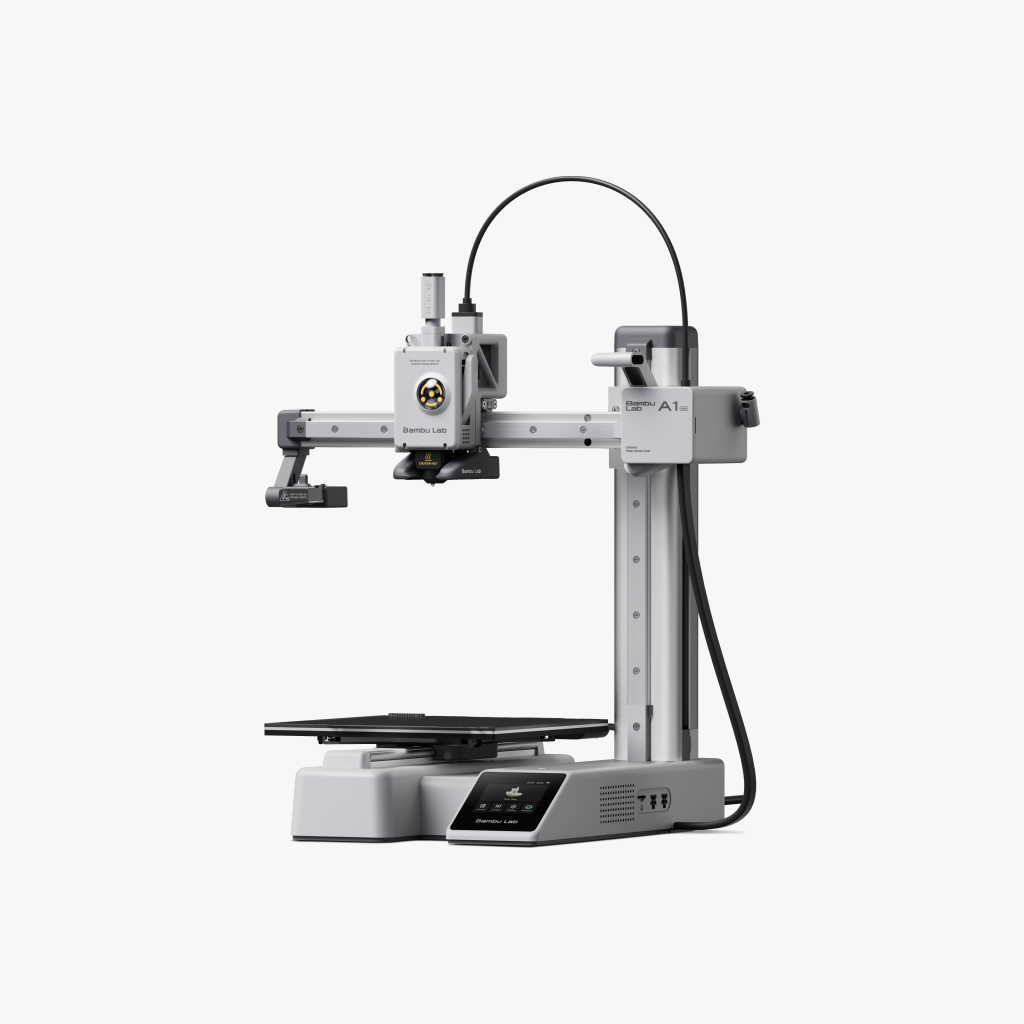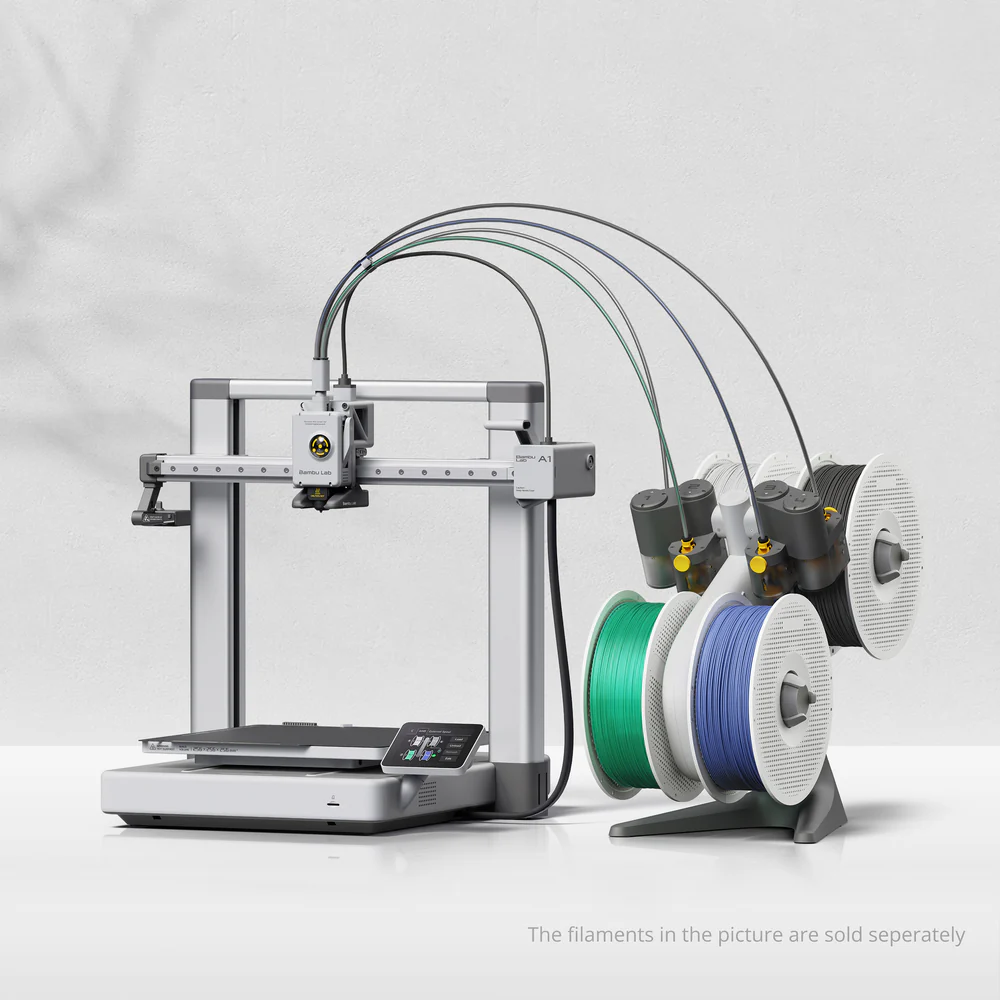The Bambu Lab A1 range offers the lowest cost of entry into the Bambu Lab ecosystem without sacrificing print speed or quality.
You get a hugely capable FFF 3D printer for less than £300, ideal for printing PLA, PETG, TPU, and PVA. These materials cover thousands of applications, from model-making and custom packaging to tubing and gaskets.
There are two 3D printers in the A1 line-up:
Both models are available as a standalone printer or as a Combo bundle with an AMS Lite (also available separately) for enhanced multi-material / multi-colour capability and also automatic filament backup:
The physical dimensions, build volumes, and maximum build plate temperatures of the A1 and A1 Mini are different. The best Bambu Lab A1 printer for you depends on the size of the builds you intend to produce.
Join us below to discover everything you need to know.
A1 Mini

The A1 Mini is Bambu Labs’ smallest and least expensive 3D printer.
Its 180 x 180 x 180 mm build volume is set into a tiny 347 x 315 x 365 mm footprint, perfect for countertops and workstations with limited space.
The build plate reaches 80 ℃ and is available with textured or smooth print surfaces. Cooling is handled by a part cooling fan, hot end fan, and MC board cooling fan.
Related: Bambu Lab Filament: Your Quick Guide to Filament Calibration
There’s no chamber, with all 3D printers in the A1 range having an open chamber. But you get a 2.4-inch 320 x 240 IPS touchscreen for easy control.
An open chamber offers advantages, including better accessibility and ventilation for parts that benefit from rapid cooling, like PLA parts.
The downside is that you cannot control the temperature, which can affect print quality for some material types, and fumes and particles cannot be contained. If you want a closed chamber, check out the more expensive Bambu Lab P1S, X1 Carbon, and X1E.
Connectivity is over Wi-Fi, and you can use the Bambu Lab app, Bambu Handy, on your smartphone (iOS or Android) and Bambu Studio on Windows or Mac. Bambu Handy is a control interface, while Bambu Studio is a control interface and slicer.
Who is it for?
The A1 Mini is for professionals and hobbyists with very limited desk space. It’s a hugely capable 3D printer for small builds with excellent software and material support.
A1

The A1 is larger than the A1 Mini with a 256 x 256 x 256 mm build volume set into a 385 x 410 x 430 mm aluminium and steel shell.
That bigger build volume is joined by an upgraded build plate heating element that reaches 100 ℃ for better adhesion on larger builds.
Related: Bambu Lab Printer Comparison: Find The Right Desktop Printer
The A1 has a larger 3.5-inch 320 x 240 IPS touchscreen control versus the 2.4-inch screen on the A1 Mini.
Bambu Lab recently showed commitment to improving and iterating its products by upgrading its A1 printer with a Kevlar-reinforced heat bed cable with thicker insulation and extended strain relief.
You’ll need more space to accommodate the A1 versus the A1 Mini, but the significantly enhanced build volume opens the door to more build types. The A1 and A1 Mini comfortably print PLA, PETG, TPU, and PVA.
Who is it for?
The A1 is for professionals and hobbyists wanting larger build capabilities. The A1 offers 188% more build volume than the A1 Mini, opening the door to significantly larger models and parts.
Find out more
Contact us for a Bambu Lab A1 range demo. We’ll walk through the features and help you pick the right printer.




